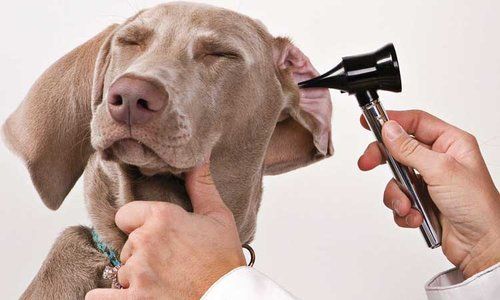Ear Infections in Dogs
Ear infections in dogs can be range from mildly irritating to extremely painful for your pet. They can be caused by several sources including bacteria, yeast or ear mites. If you suspect that your pet has an ear infection, arranging an appointment with your vet will determine the best course of treatment. In this article, we’ll take a closer look at the signs and symptoms of ear infections in dogs, the treatment available and the steps you can take to protect your dog from experiencing this condition.
Types of Ear Infections in Dogs
There are typically three types of ear infections that can affect your dog – media, otitis externa, and internal. Each infects a different part of the ear and may be more common in certain breeds such as Cocker Spaniels and Basset Hounds.
Otitis externa – This is an inflammation that affects the delicate lining of the external part of the ear canal.
Otitis media and interna – These infections impact the middle and inner part of the ear canal and are usually the result of infection spreading from the external ear. These infections need urgent attention as if neglected they could lead to partial or full deafness.
Symptoms to Look Out For
Ear infections are not so easy to spot as most cases are present inside the ear. However, your dog will usually tell you if he is experiencing problems. Here are the typical symptoms to look out for:
- Pawing at the ears
- Shaking the head and whining
- An unpleasant odor coming from one or both ears
- Redness inside the ear
- Scabs or crusty ears
- Yellow or brown discharge
Other more extreme symptoms may include loss of balance, strange eye movements and hearing loss.
Diagnosis and Treatment – What to Expect
A standard ear exam by your vet is usually all that is required to diagnose an ear infection. Your vet may ask you questions, such as how long it has been going on, if your dog has been in long grass recently (a common habitat for mites), and whether you have tried to clean the ears.
As far as treatment goes, this is usually quite simple. Your vet will provide you with an appropriate product that you can apply at home. They will show you how to clean around and inside the ear safely and tell you how often you need to repeat the process.
Using a cotton ball is the safest way to clean your dog’s ear. Never use Q-Tips as these can push the debris from the infection deeper into the near and cause damage to the eardrum. You may need to clean your dog’s ears several times a day. After cleaning, you can apply the medication given to you by your vet as prescribed. This is usually provided as an ointment or as drops. The length of treatment will depend on the severity of the infection. In some cases, your vet may also provide you with oral medications such as antibiotics, anti-inflammatory, and anti-yeast medications. Your vet will also reschedule follow-up appointments to ensure the medication is working and the infection has cleared.
Cost to Treat: $250 to $4,500
Preventing Further Infections
The good news is that there are many things you can do to prevent ear infections in dogs. These include:
- Checking your dog’s ears regularly and cleaning any debris away with a cotton ball and some water.
- Check your dog’s ears if he has been running through long grass or anywhere where livestock are present. These are common areas for mites to inhabit and they will often hitch a ride on any other animal passing through.
- If your dog has been swimming, dry his ears inside and out.
- Ask your vet for an approved cleaner that you can use for routine cleaning of your dog’s ears.
Final Thoughts
Keep your dog’s ears and hearing in great condition with regular cleaning and checking. If you suspect that an infection is present, schedule an appointment with your vet as soon as possible. Your pet deserves the very best care but this care can often come at a price. By taking out a pet insurance plan, you can ease this burden and ensure your pet is on the road to recovery as quickly as possible. Take a look at the wide variety of plans from PetInsuranceQuotes.com and protect yourself and your beloved pet.
Related Content




















